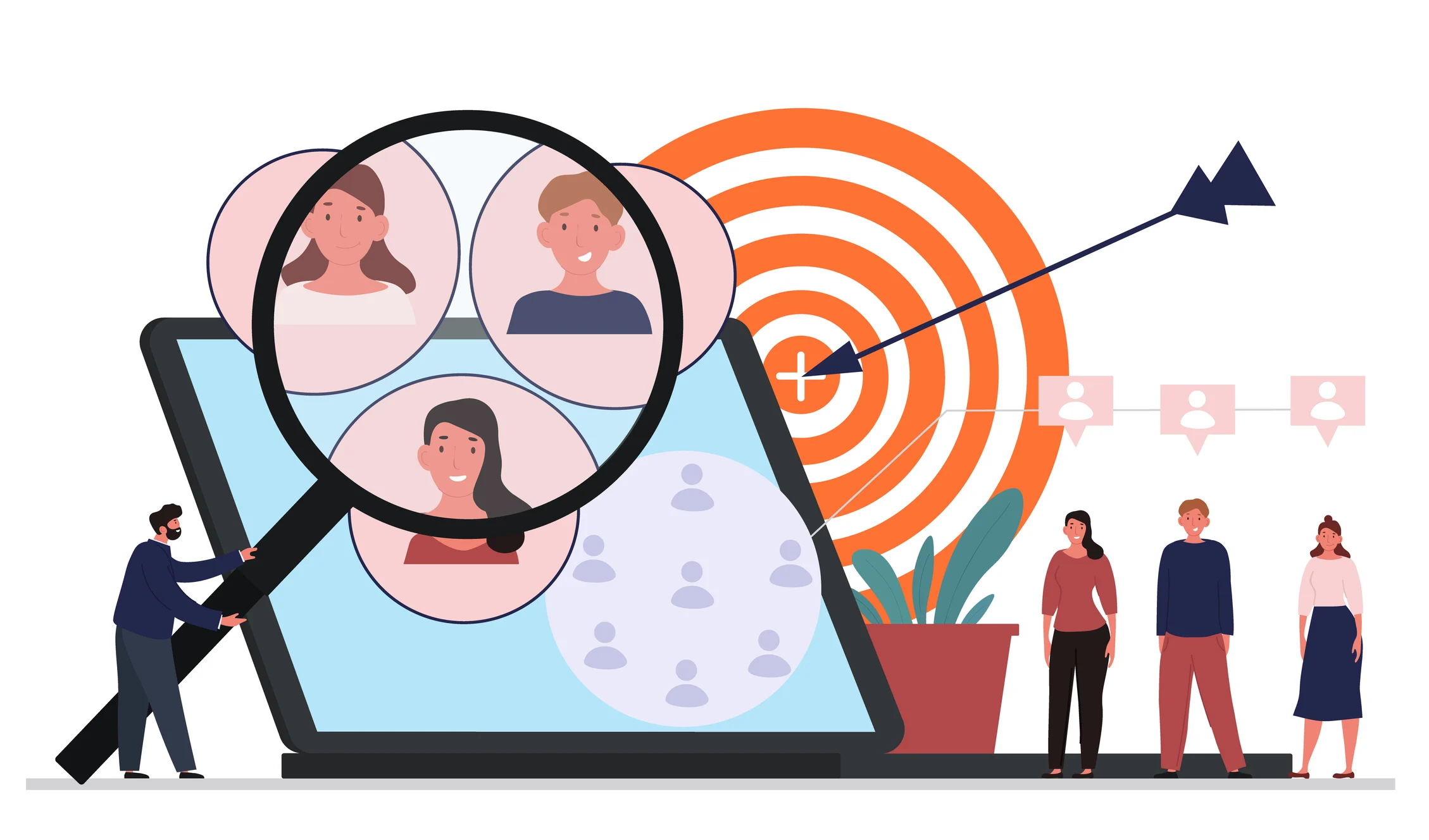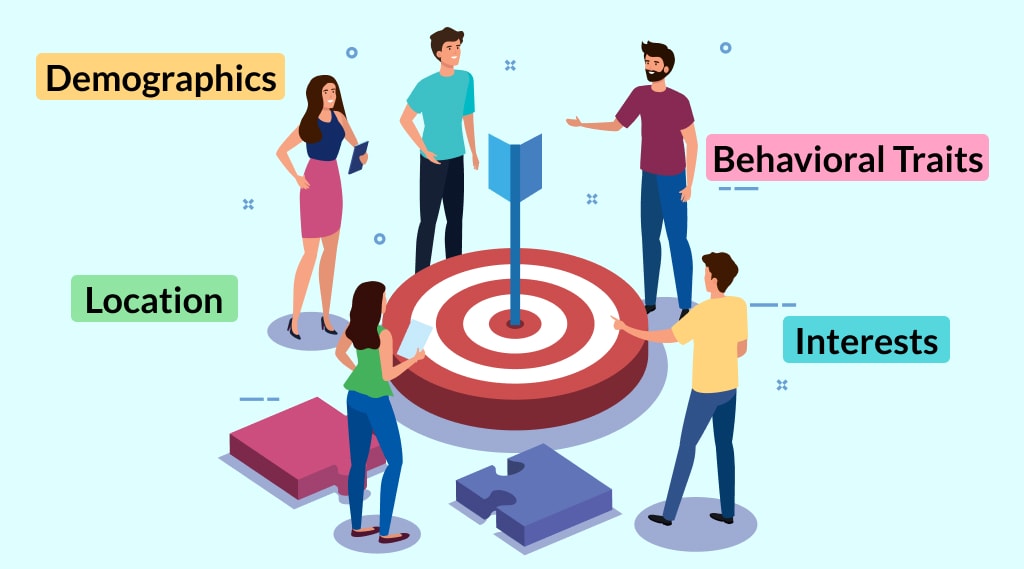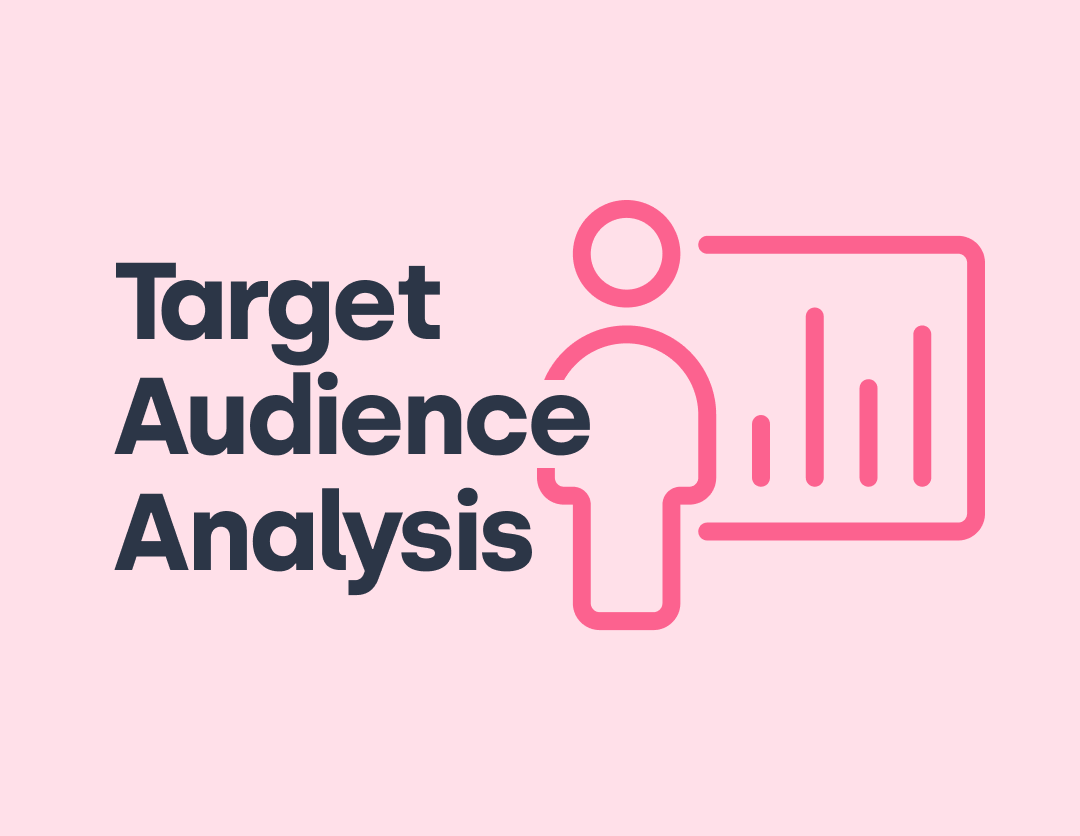In today’s competitive market, identifying your target audience is a fundamental step in creating effective marketing campaigns. Understanding who your target audience is not only optimizes your marketing efforts but also ensures that your message resonates with the right people. By zeroing in on the specific group that is most likely to engage with your brand, you can significantly boost your marketing strategy’s efficiency and effectiveness.

At Mastodon Marketing, we specialize in helping businesses like yours find and connect with their ideal target audience. Through data-driven strategies and advanced market research, we enable you to focus on the right target audience, thereby maximizing your return on investment and achieving your business goals. Whether you’re looking to engage prospective customers or deepen relationships with your existing audience, understanding your target market is crucial to success.
Understanding Your Target Audience
A target audience refers to the specific group of people you want to reach with your marketing campaigns. These are the individuals most likely to be interested in your products or services, making them the primary focus of your marketing efforts. Understanding your target audience is vital because it allows you to tailor your messaging, content, and marketing strategies to meet their specific needs and preferences.

A well-defined target audience is the cornerstone of a successful marketing campaign. By identifying and focusing on the right audience, you can create content that speaks directly to their pain points, interests, and goals. This approach not only enhances engagement but also increases the likelihood of converting potential customers into loyal ones.
Moreover, targeting the right audience helps in optimizing your marketing budget, ensuring that your resources are directed toward those who are most likely to convert.
Types of Target Audiences
Understanding the different types of target audiences is essential for crafting a comprehensive marketing strategy. Each type of target audience provides unique insights that can help you better define your market and tailor your marketing campaigns effectively.

Demographic Target Audiences:
Demographic information is one of the most basic yet crucial aspects of defining a target audience. This includes factors such as age, gender, location, income, education level, and marital status. For instance, if your business sells luxury products, your target demographic may include individuals with a higher income level and a penchant for premium quality.
By gathering demographic data, you can segment your audience based on these characteristics, allowing you to create more personalized marketing campaigns.
Psychographic Target Audiences:
While demographic information tells you who your audience is, psychographic data reveals why they make certain purchasing decisions. This includes their interests, values, attitudes, and lifestyle choices.
For example, a brand that promotes sustainable practices may target environmentally conscious consumers who value sustainability and ethical products. Understanding the psychographic characteristics of your audience enables you to connect with them on a deeper level, creating a more personal connection through your marketing efforts.
Behavioral Target Audiences:
Behavioral targeting focuses on the actions and behaviors of your audience, such as their purchase history, online activity, and brand interactions. This type of targeting is crucial for understanding consumer behavior and predicting future actions, including purchase intention.
For instance, if data shows that a segment of your audience frequently engages with content related to fitness, you can tailor your marketing campaigns to promote fitness-related products or services to this specific audience. Behavioral insights help in refining your marketing strategy, ensuring that your efforts are aligned with the actual needs and interests of your audience.
The Benefits of Knowing Your Target Audience
A clear understanding of your target audience is crucial for enhancing the effectiveness of your marketing campaigns. When you know who your ideal customers are, you can focus your marketing efforts on specific groups that are most likely to respond positively to your message. This targeted approach not only increases the efficiency of your campaigns but also improves their overall impact.
By concentrating on a well-defined target audience, you can create content that truly resonates with prospective customers. Tailoring your messaging to address their specific needs, interests, and pain points makes your marketing more relevant and engaging. This relevance is key to fostering a personal connection with your audience, which in turn can lead to stronger customer relationships and increased brand loyalty.

Moreover, focusing your marketing efforts on the right audience helps optimize your marketing budget by ensuring that your resources are used effectively. Instead of trying to appeal to everyone, which can dilute your message, you can concentrate on those who are most likely to convert. This strategic focus not only drives better results but also contributes to long-term business growth by building a loyal customer base that values your brand.
Researching Your Target Market
Conducting thorough market research is essential for gaining valuable insights into your target audience and effectively defining your target market. Understanding your audience’s preferences, behaviors, and needs allows you to tailor your marketing strategies to meet their specific demands.
Market research is the foundation upon which successful marketing campaigns are built, providing the data necessary to make informed decisions and craft personalized content that resonates with your audience.
Using Social Media Analytics
Social media platforms are powerful tools for understanding both current and potential customers. By leveraging social media analytics, you can gather detailed audience insights, such as engagement patterns, content preferences, and demographic data. These platforms offer valuable tools that help identify the specific audience segments that are most engaged with your content, allowing you to fine-tune your marketing efforts to better meet their needs.
For example, by analyzing which types of posts generate the most interaction, you can identify the interests and preferences of your audience. This data-driven approach enables you to create more relevant content, tailor your messaging, and ultimately increase the effectiveness of your marketing campaigns.
Analyzing Competitors’ Target Audiences
Another critical aspect of market research is analyzing your competitors’ target audiences. By studying who your competitors are targeting and how they are engaging with these audiences, you can identify gaps in the market that your business can exploit. This competitive analysis can reveal underserved segments or emerging trends that you can capitalize on to differentiate your brand.

For instance, if a competitor is focusing heavily on one demographic, you might discover an opportunity to target a different age group or psychographic segment that has been overlooked. By understanding your competitors’ strategies and the audiences they attract, you can refine your own marketing efforts to reach untapped markets and strengthen your position in the industry.
Creating Buyer Personas
Creating buyer personas is a crucial step in defining your target audience. Buyer personas are semi-fictional representations of your ideal customers, built using detailed customer data. To develop accurate and effective personas, it’s essential to incorporate demographic, psychographic, and behavioral characteristics.
Demographic information, such as age, gender, location, and income, helps you understand who your customers are. Psychographic details delve into their values, interests, and lifestyle, offering insight into why they make certain purchasing decisions. Behavioral characteristics, such as purchasing habits and online activity, reveal how customers interact with your brand and what drives their purchase intention.
By combining these elements, you can create well-rounded buyer personas that guide your marketing efforts. These personas help you craft personalized marketing campaigns, ensuring that your messaging and content are tailored to the specific needs and preferences of your ideal customers. This targeted approach increases the likelihood of converting potential customers and strengthens customer relationships.
Identifying Your Target Audiences
Identifying the right target audience for your business is key to maximizing the effectiveness of your marketing efforts. Start by analyzing your existing audience to understand who is already engaging with your brand. This can include current customers as well as followers on social media platforms.
Next, consider prospective customers—those who fit the profile of your ideal audience but have not yet interacted with your brand. Social media analytics and demographic data are invaluable tools for identifying these potential customers. By examining who engages with similar brands or content, you can uncover new audience segments to target.
Gathering demographic data is particularly important in understanding the specific audience you want to reach. By defining your target market based on factors such as age, gender, and location, you can ensure that your marketing campaigns are focused and relevant, ultimately improving your chances of success.

Common Mistakes to Avoid in Target Audience Research
When conducting target audience research, one of the most common mistakes is making assumptions about your audience without solid data. Relying on gut feelings or stereotypes can lead to misguided marketing strategies that fail to resonate with your actual customers. Another significant pitfall is trying to appeal to too broad of an audience. While it might seem like a good idea to reach as many people as possible, this approach often dilutes your messaging and reduces its impact.
To avoid these mistakes, it’s crucial to base your marketing strategies on data-driven insights. Using tools like social media analytics and market research, you can gather accurate information about your audience’s preferences, behaviors, and needs. This data allows you to create more precise and effective marketing campaigns, ensuring that your efforts are focused on the right audience and that your messaging truly resonates with them.
Using Your Target Audience Profile to Drive Marketing Success
Your target audience profile is a powerful tool that should guide every aspect of your marketing campaigns. By aligning your strategies with the characteristics and preferences outlined in your profile, you can craft more effective and personalized marketing efforts. This alignment ensures that your messaging, content, and overall approach resonate with your ideal customers, increasing the likelihood of engagement and conversion.

However, it’s essential to continuously monitor and update your target audience profile. Markets evolve, customer preferences shift, and new trends emerge. Regularly reviewing and refining your profile ensures it remains relevant and effective, allowing you to stay ahead of changes in your industry and maintain a strong connection with your audience.
Measuring Success and Refining Your Strategy
To measure the success of your marketing campaigns, it’s vital to track key metrics such as engagement, conversion rates, and customer feedback. These metrics provide insights into how well your campaigns are performing and whether they resonate with your target audience. Tools like Google Analytics and social media analytics are invaluable for gathering this data, offering detailed reports that highlight strengths and areas for improvement.
Using these insights, you can refine your target audience research and adjust your marketing strategy to better align with your audience’s needs. This ongoing process of evaluation and adjustment ensures that your marketing efforts remain effective, helping you to consistently reach and engage the right audience while optimizing your ROI.
Call To Action
Finding and understanding your target audience is crucial for creating successful marketing campaigns. A well-defined audience profile enables you to tailor your marketing strategies, ensuring that your efforts resonate with the right people. Continuous research, regular profile updates, and strategic adjustments are essential to stay effective in a dynamic market.
To ensure your business is reaching its full potential, leverage Mastodon Marketing’s expertise in defining and connecting with your ideal customers. Our data-driven strategies will help you identify your target audience, refine your approach, and drive meaningful results for your business.



